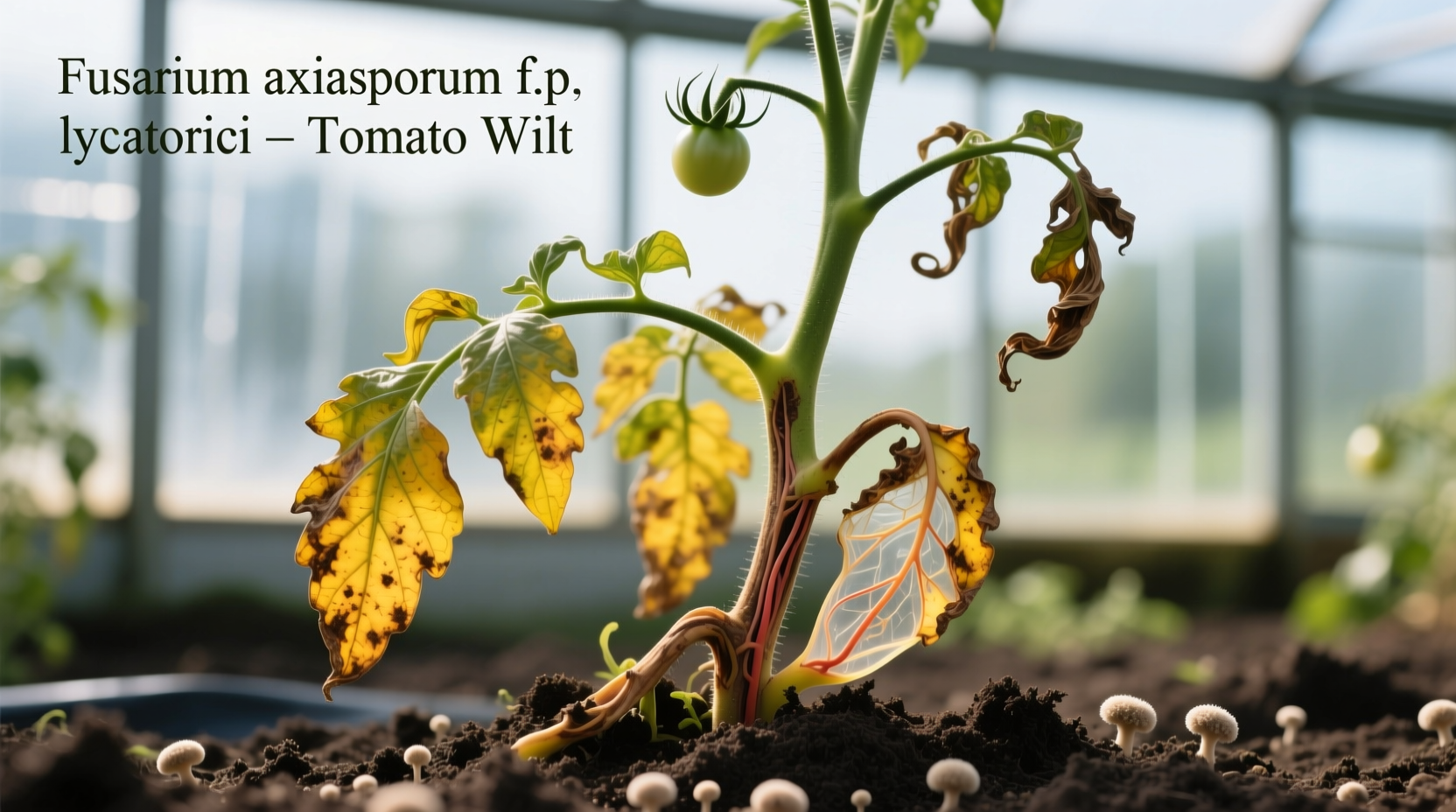Discover how to identify, prevent, and manage this devastating tomato disease before it destroys your entire crop. This comprehensive guide provides science-backed strategies that work for both home gardeners and commercial growers.
How to Spot Fusarium Wilt: Early Detection Saves Your Crop
Recognizing fusarium wilt early gives you the best chance to limit damage. The disease typically appears when plants begin setting fruit and progresses through distinct stages:
Progression Timeline of Fusarium Wilt Symptoms
- Week 1: Yellowing begins on lower leaves, usually on one side of the plant
- Week 2: V-shaped yellow patterns appear between leaf veins, progressing upward
- Week 3: Wilting occurs during hottest part of day, with partial recovery at night
- Week 4: Brown discoloration visible in vascular tissue when stem is cut
- Week 5+: Complete wilting, plant death, and potential spread to neighboring plants
Unlike bacterial wilt which causes rapid collapse, fusarium wilt progresses gradually over weeks. The key diagnostic feature is the brown streaking inside the stem – slice a symptomatic stem lengthwise to check for this telltale sign.

Why Fusarium Wilt Is Different From Similar Tomato Diseases
| Disease | Key Symptoms | Soil Survival | Resistant Varieties |
|---|---|---|---|
| Fusarium Wilt | One-sided yellowing, V-shaped patterns, brown vascular streaks | 10+ years | F1, F2, F3 races available |
| Verticillium Wilt | General yellowing, U-shaped patterns, green veins | 10-15 years | Some resistant varieties |
| Bacterial Wilt | Sudden wilting, no yellowing, white bacterial ooze | 1-2 years | None available |
This comparison table from the University of Minnesota Extension helps distinguish between common wilting diseases. Misdiagnosis leads to ineffective treatments – always confirm with stem inspection before taking action.
Proven Prevention Strategies That Actually Work
Since no chemical treatment effectively cures established fusarium wilt infections, prevention is your primary defense. Implement these evidence-based approaches:
Plant Resistant Varieties (Your Most Effective Tool)
Select tomato varieties with specific resistance markers:
- F = Resistance to Fusarium wilt Race 1
- FF = Resistance to Races 1 & 2
- FFF = Resistance to Races 1, 2 & 3
Recommended resistant varieties include:
- Race 1: Celebrity, Burpee Hybrid
- Races 1 & 2: Better Boy, Big Beef, Rutgers
- Races 1, 2 & 3: Iron Lady, Defiant PHR, Gardener's Delight
The USDA Agricultural Research Service confirms that resistant varieties reduce disease incidence by 70-90% compared to susceptible types when grown in infected soil.
Implement Strategic Crop Rotation
Rotate tomatoes with non-host crops for minimum 4 years between plantings. Effective rotation crops include:
- Broccoli and other brassicas (shown to suppress soil pathogens)
- Marigolds (specific varieties release compounds that reduce fungal viability)
- Grasses and grains
Important context boundary: Crop rotation effectiveness depends on soil type. Sandy soils require longer rotations (5-7 years) while clay soils may see improvement in 3-4 years, according to American Phytopathological Society research.
Soil Management Techniques That Reduce Risk
- Maintain soil pH between 6.5-7.0 (fusarium prefers acidic conditions)
- Improve drainage – avoid overwatering which creates favorable conditions
- Use drip irrigation instead of overhead watering to prevent splashing
- Remove and destroy infected plants immediately (do not compost)
- Solarize soil during summer months in warm climates
What Doesn't Work (And Might Make Things Worse)
Avoid these common but ineffective approaches that waste your time and resources:
- Home remedies like baking soda or vinegar sprays – no scientific evidence of effectiveness against soil-borne fungi
- Overuse of fungicides – most home-use fungicides don't penetrate to root zone where infection occurs
- Planting in the same spot annually – allows pathogen buildup to dangerous levels
- Using infected plant debris as mulch – spreads the disease throughout your garden
When Prevention Fails: Damage Control Strategies
If fusarium wilt appears despite your prevention efforts:
- Immediately remove and destroy infected plants (do not compost)
- Disinfect tools with 10% bleach solution or 70% alcohol
- Mark infected areas to avoid planting tomatoes there for 4+ years
- Apply calcium amendments to improve plant resilience (1-2 lbs per 100 sq ft)
- Consider grafting susceptible varieties onto resistant rootstock
Research from University of California Agriculture and Natural Resources shows that prompt removal of infected plants can reduce disease spread by up to 60% in home gardens.
Long-Term Soil Health: Breaking the Disease Cycle
For gardens with chronic fusarium problems, implement these long-term strategies:
- Test soil for specific fusarium races (labs like AgriTech in California offer this)
- Plant mustard cover crops which release biofumigant compounds
- Introduce beneficial microbes like Trichoderma harzianum
- Consider container gardening with sterile potting mix for tomatoes
- Build raised beds with imported soil if native soil is heavily infected
Remember that fusarium wilt management requires patience – it takes multiple seasons to significantly reduce pathogen levels in soil. Consistent implementation of these strategies yields the best results over time.











 浙公网安备
33010002000092号
浙公网安备
33010002000092号 浙B2-20120091-4
浙B2-20120091-4